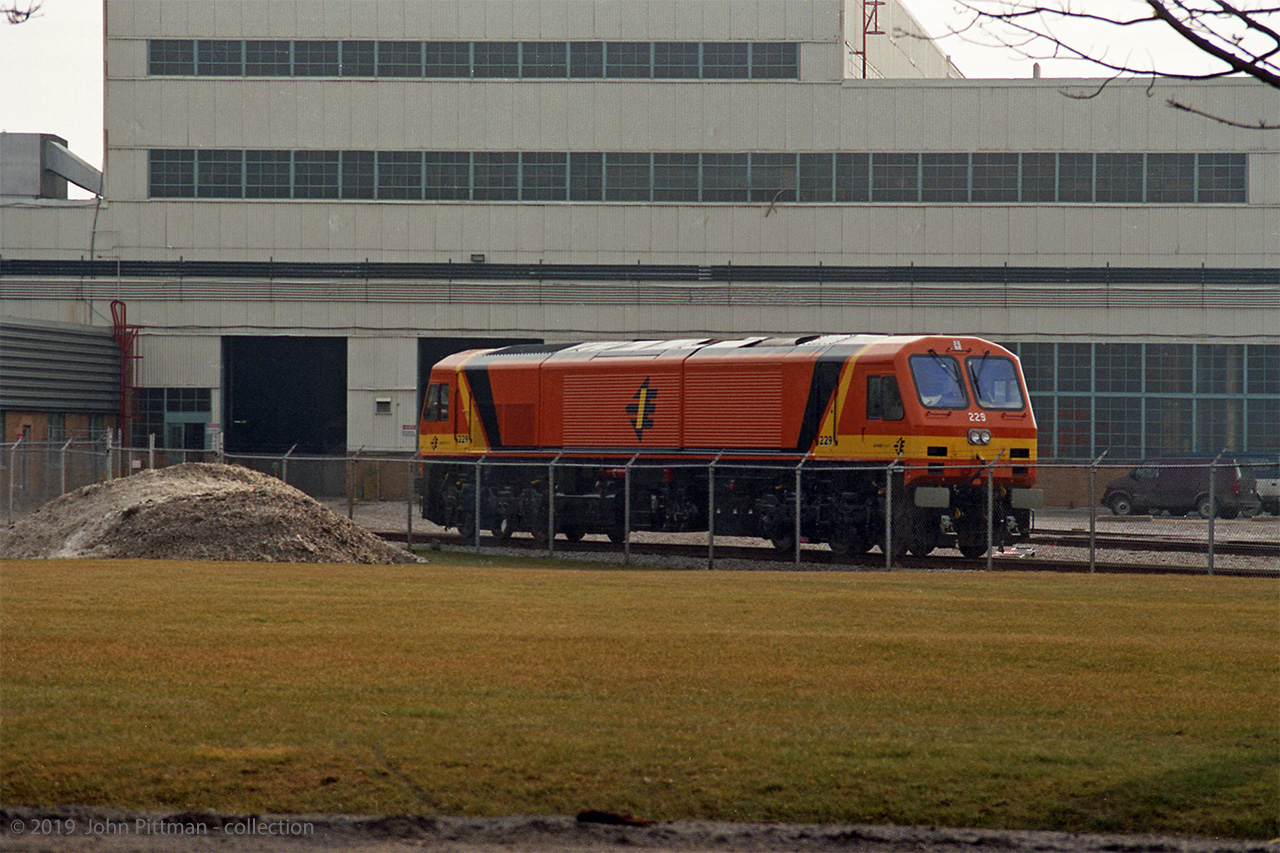|
Caption: St Patrick is the patron saint of Ireland, and March 17 is his day - prompting this submission.
New JT42HCW locomotive 229 for Irish Rail (Iarnród Éireann) is pictured outside the GM Diesel Division Plant in London ON. As of 2019 these remain the newest and most powerful locomotives in Ireland.
The railways of Ireland have a track gauge of 5' 3", wider than international standard gauge which is 4' 8-1/2". Dissatisfied with previous diesel locomotives sourced from England, Irish Rail ordered their "201 class" of new locomotives from EMD / GM Diesel Division. They were built in 1994 and early 1995 with unit numbers from 201-234, including 2 built for Northern Ireland Railways.
JT42HCW locomotives are powered by an EMD V 12-710G3B diesel engine of 3200 gross HP (2970 HP for traction). These locomotives have the capability of using the prime mover to provide Head End Power for passenger coaches, but problems experienced with this system have ended its use. Instead a 4000 series HEP control car is typically placed at the other end of intercity passenger trains, the equivalent of GO Transit's former APCU.
In recent years the majority of Irish intercity passenger trains are operated by diesel multiple units, an exception being Cork-Dublin services which are generally locomotive hauled. I saw several 201-class locomotives on passenger trains at Cork station in 2015, in a different colour scheme. JT42HCW locomotives also power freight trains in Ireland.
Location mapped is approximate, date might not be exact.
|



For the mapped part, move it closer to the street. You’re on the lawn, but it shows the pic was taken in the plant.
I never knew based on your previous answer it takes an hour to do all this, but all of us, even me appreciate it.
I was unsure which side of the plant, so I compromised Unfortunately cannot change anything myself once accepted by RPca.
Unfortunately cannot change anything myself once accepted by RPca.
I like to provide informative, accurate captions, which requires a bit of research. Also scans from slides or negatives generally benefit from more photoshop attention than modern digital images require.
Thanks Driver8666 and others for comments and favorites.
Close enough is good enough for all of us.
No problem. I appreciate the time and effort you take to convert these from slides.
I witnessed some of these in action on my trip to Ireland in ’03. I did not ride as much in ’06 so did not see.
Here’s the question – was this the one shipped by plane to Ireland??
Only the first JT42HCW for Ireland unit 201 was air freighted, whereas this is 229, the 29th. Among the reasons to air-freight unit 201 was so Iarnród Éireann could check it over and learn early, verify clearances under bridges etc – better to find issues before a lot of units were built.
Note that while in-flight unit 201 was probably the fastest locomotive in history (around 500 MPH ! But off the rails does not count. )
In my collection, I see earlier production units transported by CN, while the later units are handled by CP. (in either case, to an Atlantic Ocean port)
Some supplementary info: The Irish rail term for the 4000 series HEP and control cab cars is “Driving Van Trailer”. They have a very sleek from end are a standard part of “Mark IV” coach sets. These Irish locomotive-powered passenger trains run push-pull, same as GO Transit does.
Also …
I do my best with dates, but for some of my 1990′s London collection its a guess based on research. I now think that this picture dates from March or April 1995, on account of the melting snow pile to the left of the engine !
It shipped out with snow flying, but London is subject to snow from winds off Lake Huron.
On June 12th 2025 Irish Rail 207 was providing the power operating in push-mode on the 1000h Enterprise Service from Belfast Grand Central station to Dublin Connolly, arriving on-time at 1213h.